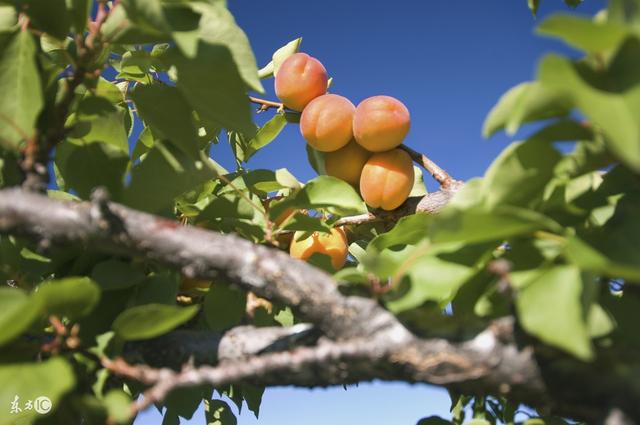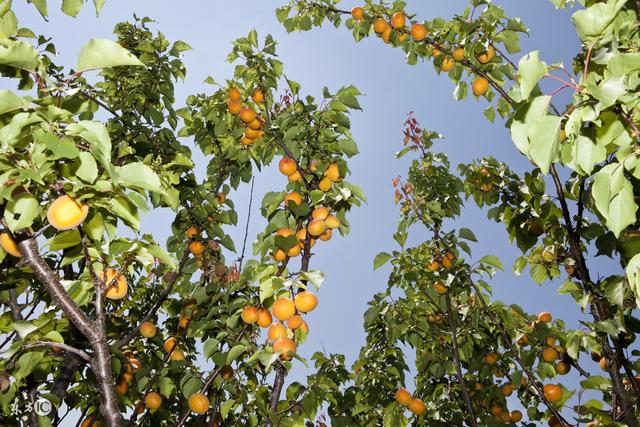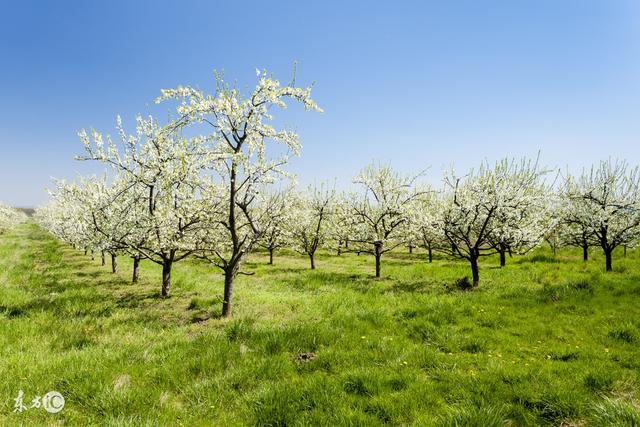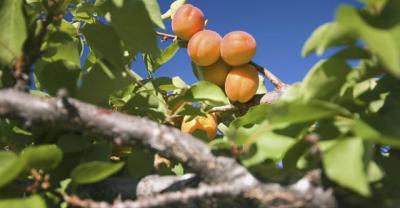Cultivation techniques of apricot planting conditions of apricot
Although apricot trees are cold-resistant, drought-tolerant, barren-tolerant and easy to manage, they still have some limitations in their adaptability to the boundary environment. If we correctly understand the requirements of apricot trees on external environmental conditions, we can choose topography and topography to develop apricot trees to enhance their strengths and avoid weaknesses, so as to obtain higher yield.

1. Temperature
Apricot is the most cold-tolerant fruit tree among deciduous fruit trees. apricot can grow normally in areas with an average annual temperature of about 6 ℃. In some main producing areas of almonds in Zhangjiakou area, the average annual temperature is only 4.6 ℃, and apricot can also withstand high temperature. the wide adaptability of apricot to temperature is incomparable to other deciduous fruit trees. in the whole annual growth cycle, apricot plants need an effective accumulated temperature of 2000 to 2500 ℃. Flowering, fertilization and fruiting can be completed when the temperature is higher than 10 ℃, but during the growing period, the flower organs and young fruits are not tolerant to low temperature. In a short period of 3 ℃, the pistil branches and young fruits will be frozen, so the low temperature at flowering stage is the limiting factor for apricot cultivation.

2. Lighting
Apricot is a light-loving tree species, which is suitable for apricot growth when the annual sunshine hours are more than 2500-3000 hours in the north, and under the condition of poor light, the plant is maldeveloped, branches and leaves grow excessively, degenerated flowers increase, inner chamber branches die, diseases and insect pests are serious, and the fruit is chromatic. seriously affect the growth and development of apricot.

3. Moisture
Apricot has developed root system, strong main root, can absorb deep soil water, and has stronger drought resistance than other fruit trees. For newly planted apricot trees, if the soil moisture is insufficient, it will affect the survival rate of planting. In the vigorous branch growth period and fruit expansion period, if the soil moisture is insufficient, it will also weaken the growth potential of apricot trees, affect flower bud differentiation and yield in the same year.
During the growth period, if the soil moisture in the apricot orchard is too much, or the air humidity is too high, it will make the branches grow, the diseases and insect pests spread, the fruit coloring badly and the quality decline. In low-lying wetlands, if the ground is flooded for too long, the leaves of the light ones turn yellow, fall off early, the roots of the heavy ones rot, and the whole plant dies.

4. Soil
Apricot trees are more resistant to barren, and do not have strict requirements on soil types and fertility standards. Apricot trees can grow normally on light clay, sandy loam, sand-gravel soil, light alkaline soil, slopes above 35 °and under mountains below 2500 meters above sea level. however, the most ideal site condition of apricot should be sunny slope or semi-sunny slope with deep soil layer, fertile soil and good drainage.
Cultivation techniques of apricot pruning of apricot trees
The solution of Flower and Fruit drop in Apricot cultivation technique
Fruit head leads all kinds of fruit trees and moisture
Fruit head leads all kinds of fruit trees and light
Fruit head leads all kinds of fruit trees and temperature
Fruit head leads all kinds of fruit trees and soil
- Prev

Watermelon planting: soilless cultivation techniques of watermelon
In recent years, the soilless cultivation of watermelon is more and more favored by melon farmers, which can not only effectively solve the contradiction of water, air and nutrients in traditional soil cultivation.
- Next

Simple planting of gourd in eight steps
1. Because the gourd seed coat is thick and the water is difficult to absorb, farmers soak the seeds for 24 hours before planting. 2, gourd seed soaking can be carried out budding, three kinds of budding.
Related
- Fuxing push coffee new agricultural production and marketing class: lack of small-scale processing plants
- Jujube rice field leisure farm deep ploughing Yilan for five years to create a space for organic food and play
- Nongyu Farm-A trial of organic papaya for brave women with advanced technology
- Four points for attention in the prevention and control of diseases and insect pests of edible fungi
- How to add nutrient solution to Edible Fungi
- Is there any good way to control edible fungus mites?
- Open Inoculation Technology of Edible Fungi
- Is there any clever way to use fertilizer for edible fungus in winter?
- What agents are used to kill the pathogens of edible fungi in the mushroom shed?
- Rapid drying of Edible Fungi

